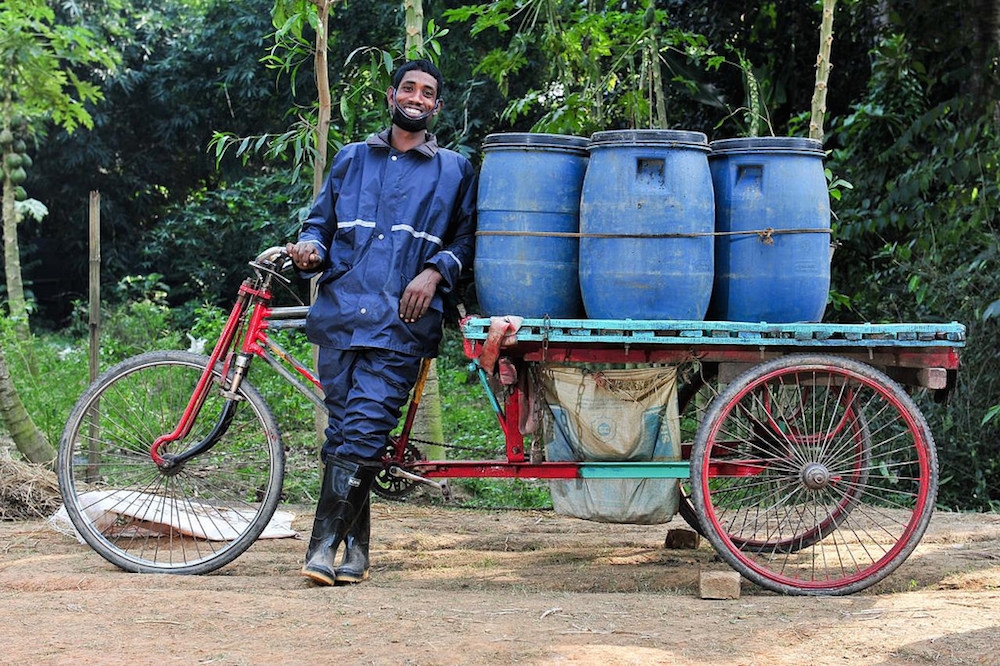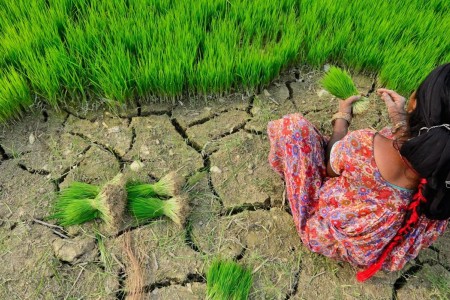As part of WLE's partnership with The Economist Events' Sustainability Summit this March in London, the Thrive blog is publishing a series of posts that discuss the role science plays in catalyzing shifts toward sustainability in the private sector and beyond. In this blog post, Kalanithy Vairavamoorthy and Krishna C Rao, of the International Water Management Institute (IWMI), discuss business models for resource recovery and reuse.

A clean and private toilet is something a lot of us take for granted, but for thousands of people living in the slums of Rwandan capital Kigali, safe sanitation was long a luxury out of reach.
In the past, these communities had no other option than to use either pit latrines, often full and overflowing, or flying toilets, essentially plastic bags serving as single-use toilets and then tossed to the wayside. Naturally, the absence of proper sanitation was a daily nuisance, causing both pollution and disease.
From sanitation challenge to business opportunity
Many megacities across Africa and Asia are bogged down by similar issues, and while proper sewage systems would be the ideal solution, there is virtually no chance of realizing such systems in the next few decades. But what if sanitation and waste challenges in urban centers could be turned into profitable business ventures?
In Kigali, Rwanda Environment Care (REC), now a privately owned company, recognized that the high demand for sanitation in cities coincided with an equally high demand for fertilizer among farmers throughout the country – and that the two could be combined to make up a viable business.
Now, REC builds and operates public ecological sanitation (eco-san) toilets and uses the collected fecal sludge to produce organic fertilizer and compost for sale to farmers. The revenue from sale of compost is complemented by fees paid for use of the public toilets, rental income from kiosks and shops nearby, and consultation services on how to construct eco-san latrines offered to other entrepreneurs. In total, the revenues are great enough to cover routine repairs and staff salaries.
REC’s new eco-san latrines in Kigali have not only improved quality of life for local people, they also contribute to a cleaner and healthier environment. As an added benefit, the increased supply of organic, environmentally friendly compost is expected to reduce the use of chemical fertilizers, furthering sustainable farming.
What makes a resource reuse business?
Businesses similar to REC in Rwanda are springing up around the developing world, and at IWMI, we believe that such ventures may contribute to solving current urbanization challenges. Tapping into the circular economy by recovering nutrients from waste to generate energy and other products provides numerous benefits: it can help improve sanitation, waste management and water quality, while creating jobs, reducing dependency on costly imports and furthering use of organic fertilizers.
Therefore, we have worked to screen 150 success stories from across Asia, Africa and Latin America. Based on the knowledge we gained, we are now now examining and assessing dozens of the most promising business models for resource recovery and reuse from human waste and wastewater.
While it is still early to make conclusions, some preliminary parameters for what makes a resource recovery and reuse business successful and scalable are emerging:
First, they must have access to input materials, such as wastewater, fecal sludge, household or industry waste. Thorough analysis of the amount and quality of waste available is a necessary first step before developing a business model. Relatedly, determining an appropriate location – close to both waste generation and potential customers – is key.
Further, as in all other business ventures, the final product must be in demand. In Rwanda, as mentioned above, farmers were in need of cheap, effective and environmentally friendly fertilizer, making the case for REC to produce compost. In Uganda, an alternative fuel product is what’s in demand, which has prompted Eco-Fuel Africa, another resource recovery and reuse business, to convert municipal waste into clean burning fuel briquettes. Market analysis can aid businesses in selecting the most appropriate technology.
Above and beyond business as usual
In addition to supply and demand, resource recovery and reuse businesses can also benefit from exploring alternative institutional setups.
Public-private partnerships are common in the industry. Municipal authorities are often looking for innovative solutions to waste management problems, and public subsidies and support schemes can bolster for example compost production, which can be costly at scale and has proved difficult to establish as fully profitable endeavors.
Considering the multiple benefits of resource recovery and reuse, donors and other public agencies may also provide support. REC in Rwanda, for example, started as a pilot project funded by the United Nations Development Programme, and IWMI is currently supporting governments and donors in Ghana, Sri Lanka, India and Nepal to find solutions to their waste management challenges.
Resource recovery and reuse businesses must also concern themselves with public policies: waste-handling businesses are in some cases legally required to go through registration and certification processes before commencing operations.
Relatedly, the potential health risks and environmental hazards pose a significant threat to potential business models. Therefore, IWMI is collaborating with the World Health Organization (WHO) and has, for example, helped update the guidelines on safe use of wastewater in irrigation and is currently working on developing sanitation safety plans to facilitate the implementation of the guidelines. In other cases, businesses themselves provide training or consulting services, such as is the case for REC, on how to safely recover and reuse waste.
Finally, marketing is a necessary priority. Reusing waste carries a stigma and consumers are often skeptical, but branding and other advertising techniques can make a difference. In Sri Lanka, for example, the Weligama compost plant is surrounded by vegetable gardens and fruit trees that demonstrate the value of the compost on offer and look attractive enough that many customers enjoy a leisurely stopover. In addition to compost, high-value products such as fruit juices, seeds and plants are on offer and allow the business to turn a profit.
A revival of reuse
Despite some innovate elements in the business models we have examined – especially related to institutional partnerships and marketing – the reuse of resources is in fact not a new idea. Humans used to reuse almost all waste, but by the end of the 18th century, when it was discovered that mismanaged sewage in the cities caused disease, waste became something to hide away and minimize contact with.
Today, however, the recovery and reuse of resources stands to be revived, as it may be one measure that can secure advancement toward the Sustainable Development Goals, especially on safe sanitation and zero hunger. Effective business models, in line with the parameters above, have potential to generate triple wins, by solving sanitation challenges, furthering sustainable agriculture, and turning a profit all at once.
















Comments
Je suis heureux de vous connaitre pour la première fois.